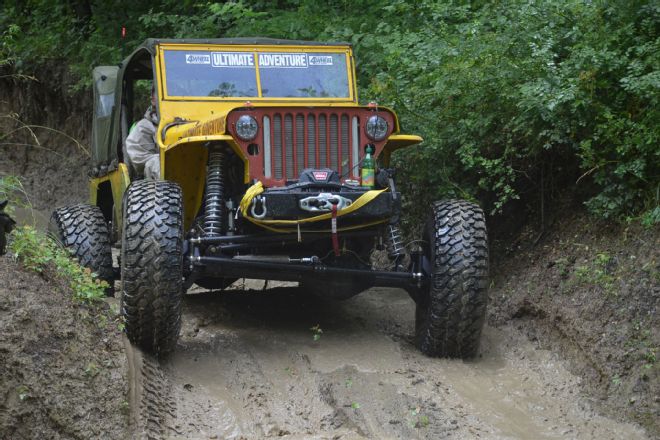
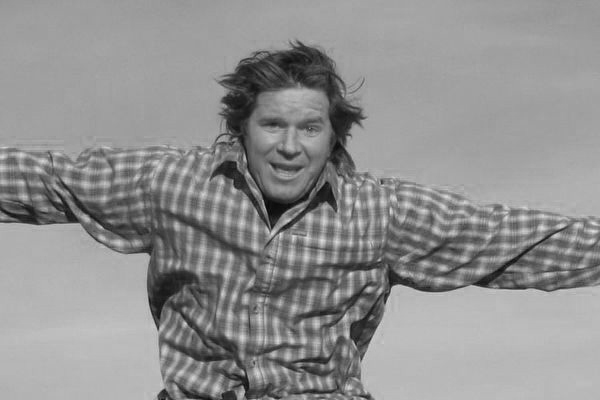 Fred Williams
Brand Manager, Petersen’s 4Wheel & Off Road
Fred Williams
Brand Manager, Petersen’s 4Wheel & Off Road
Building a vehicle for the Ultimate Adventure requires a healthy engine and that every component downstream from that engine is as strong or stronger so the vehicle can play hard and not break. Our Ultimate Summer Camp Jeep has a powerful supercharged V-8 under the hood, and it has to be able to run down the highway, tip-toe over rocks, and throttle up muddy hills. It also has to haul gear and two dirtbags who are having fun driving like maniacs, and still be reliable.
We’ve shown you much of the build going on at Synergy Manufacturing, where we dropped the aluminum Aqualu tub on a modified Jeep JK frame and stuffed all our drivetrain underneath. This month we’ll dive into those tough Spidertrax Spider-9 axles that have to be strong enough for our little Jeep to peel out with glee and get us home again. The axles we chose follow our rule for the perfect wheeling machine: “Over Axle, Under Engine.” Meaning build a set of axles that have no issues holding up to the power of your engine and size of your tires, and you’ll spend more time wheeling and less time fixing parts.
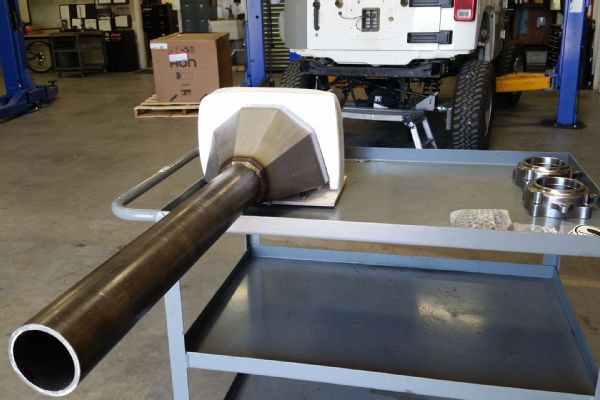 There are many axle options out there for your 4x4, and this year we returned to Spidertrax to outfit our official UA build vehicle with a pair of the company’s Spider-9 housings. These are fabricated housings designed for strength and light weight. The housings use a dropout-style third member much like a Ford 9-inch and are made of 1/4-inch steel sheetmetal welded to heavy-wall tubing. In our case we used 3 1/2x1/4-wall tubing, but the company now offers a massive Pro-Housing with 4-inch tubing as an option for even more strength.
There are many axle options out there for your 4x4, and this year we returned to Spidertrax to outfit our official UA build vehicle with a pair of the company’s Spider-9 housings. These are fabricated housings designed for strength and light weight. The housings use a dropout-style third member much like a Ford 9-inch and are made of 1/4-inch steel sheetmetal welded to heavy-wall tubing. In our case we used 3 1/2x1/4-wall tubing, but the company now offers a massive Pro-Housing with 4-inch tubing as an option for even more strength.
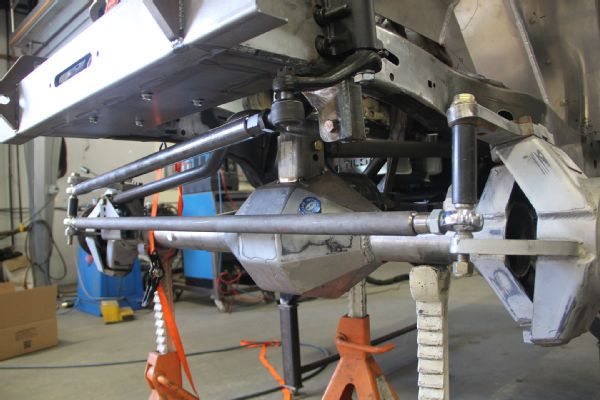 Our front Spidertrax axle is actually recycled from the Jeep we built in 2012 that had front and rear steering Spidertrax axles and (you may recall) front and rear Jeep grilles. We recently swapped the axles out of that Jeep, and the front made it to our current buildup after we cleaned it up. The housing had a few scrapes but was ready for more wheeling fun. The Synergy team soon had it set up with a custom three-link suspension designed for street and trail performance.
Our front Spidertrax axle is actually recycled from the Jeep we built in 2012 that had front and rear steering Spidertrax axles and (you may recall) front and rear Jeep grilles. We recently swapped the axles out of that Jeep, and the front made it to our current buildup after we cleaned it up. The housing had a few scrapes but was ready for more wheeling fun. The Synergy team soon had it set up with a custom three-link suspension designed for street and trail performance.
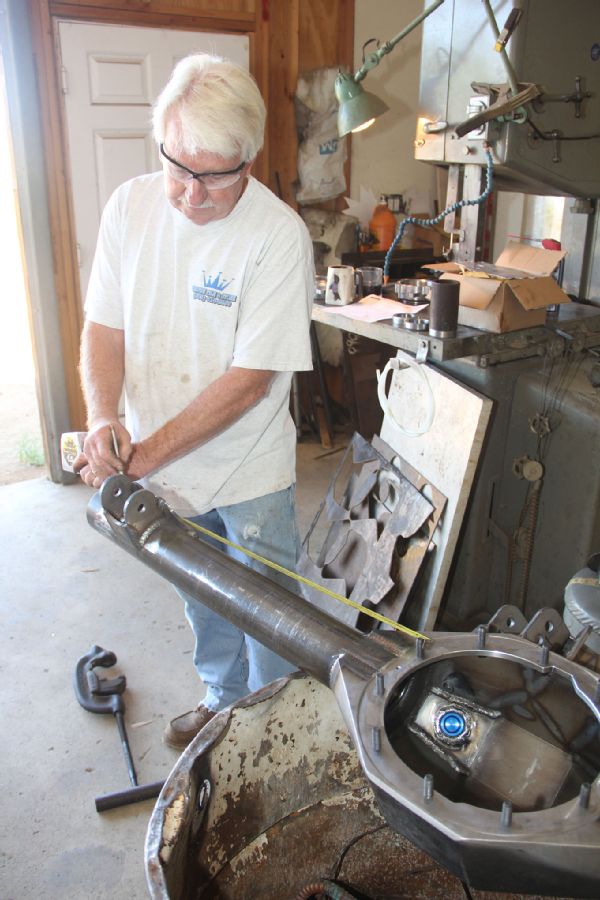 The rear axle had its four-link suspension mounts added, but we still needed to cut the housing to the desired width and add the mounting cups for the rear full-floating Ultimate Unit bearings, so we hauled it up to Sandy Cone of Cone Industries. Cone Industries has been working on 9-inch style axles for desert racers longer than most of our readers have been shifting into low range, so we knew he was the expert we wanted setting up the housing. (Plus, Spidertrax recommended him!) We already had the 300M axleshafts ordered based off the Spidertrax axle build spec sheet (it’s on their website), so we worked off of the build sheet to know where to cut our housing.
The rear axle had its four-link suspension mounts added, but we still needed to cut the housing to the desired width and add the mounting cups for the rear full-floating Ultimate Unit bearings, so we hauled it up to Sandy Cone of Cone Industries. Cone Industries has been working on 9-inch style axles for desert racers longer than most of our readers have been shifting into low range, so we knew he was the expert we wanted setting up the housing. (Plus, Spidertrax recommended him!) We already had the 300M axleshafts ordered based off the Spidertrax axle build spec sheet (it’s on their website), so we worked off of the build sheet to know where to cut our housing.
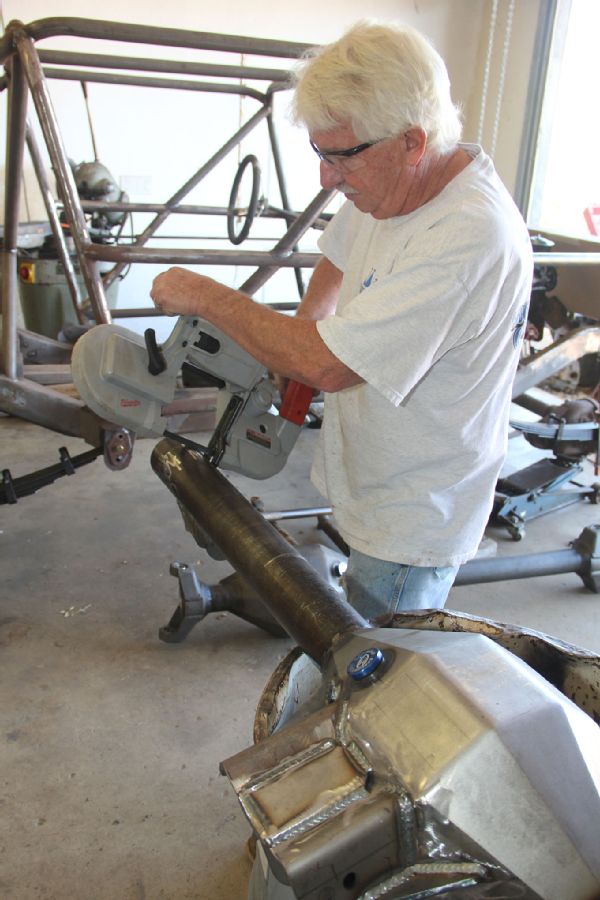 The axles come with long tubes so you can build them to your desired length. Cone marked a line around the tube and then cut it with a portable band saw before grinding the end clean. That pile of rollcage behind Cone is his old 1972 Jeepster Commando he is restoring to Race the NORRA Mexican 1000, a gentleman’s race in Baja for retro off-road race cars. Find out more at racejeepster.com
The axles come with long tubes so you can build them to your desired length. Cone marked a line around the tube and then cut it with a portable band saw before grinding the end clean. That pile of rollcage behind Cone is his old 1972 Jeepster Commando he is restoring to Race the NORRA Mexican 1000, a gentleman’s race in Baja for retro off-road race cars. Find out more at racejeepster.com
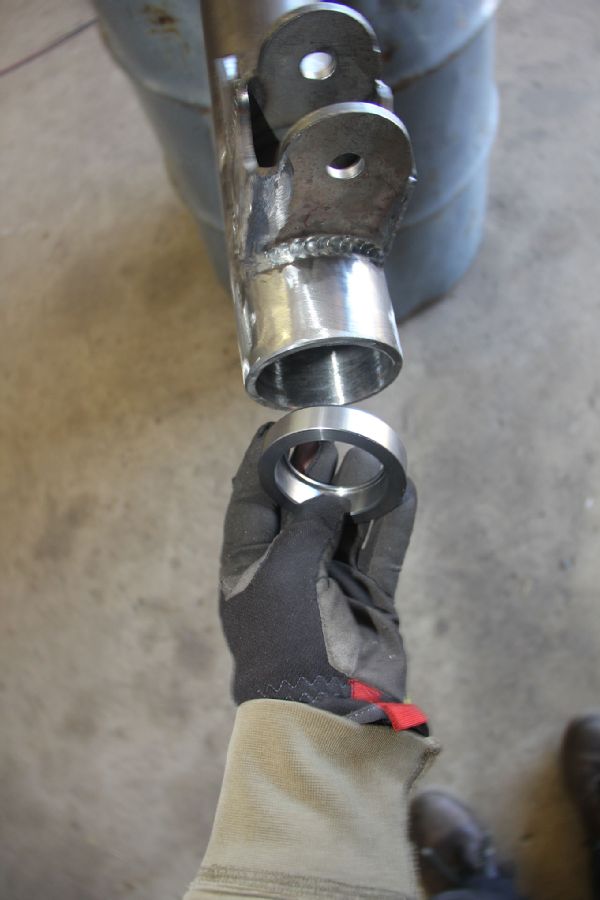 Most Spidertrax axles use double seals inside the housing right by the differential, similar to a standard front axle, where no oil runs into the axletubes. We tested a new rear axle design that put axle seals at the ends of the tubes to allow more oil capacity for cooling and thus fewer issues with burping oil out the diff breather. These small pucks are welded into the housing behind the bearing cups, and seals are added to keep the oil from seeping past.
Most Spidertrax axles use double seals inside the housing right by the differential, similar to a standard front axle, where no oil runs into the axletubes. We tested a new rear axle design that put axle seals at the ends of the tubes to allow more oil capacity for cooling and thus fewer issues with burping oil out the diff breather. These small pucks are welded into the housing behind the bearing cups, and seals are added to keep the oil from seeping past.
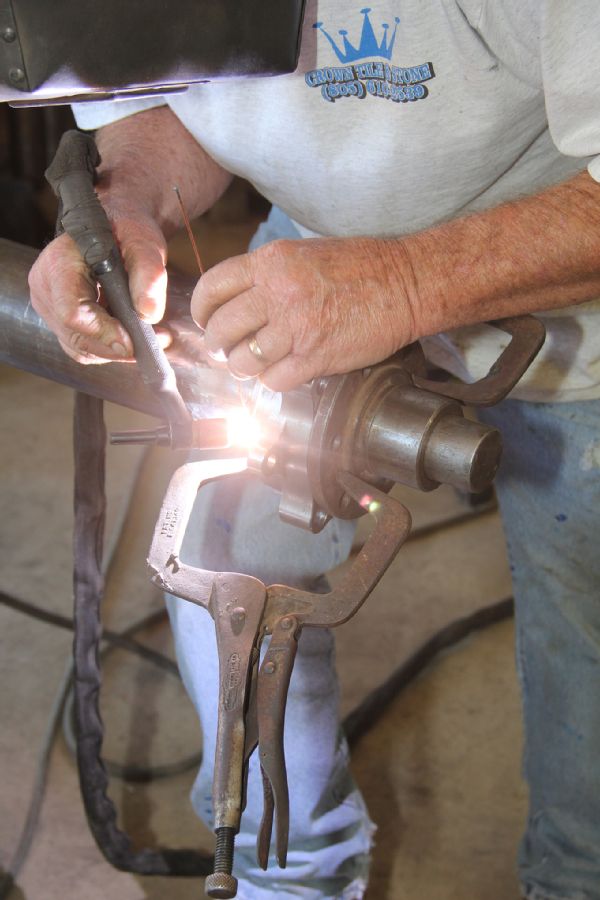 After adding the pucks, Cone uses an alignment bar through the unit bearing mounting cups and a setup third member that he designed to make sure the axle is straight before welding the mounting cups onto the housing. The cups fit tight over the axletube, but an alignment bar is safe insurance that the housing stays straight and the axleshafts slide in easily.
After adding the pucks, Cone uses an alignment bar through the unit bearing mounting cups and a setup third member that he designed to make sure the axle is straight before welding the mounting cups onto the housing. The cups fit tight over the axletube, but an alignment bar is safe insurance that the housing stays straight and the axleshafts slide in easily.
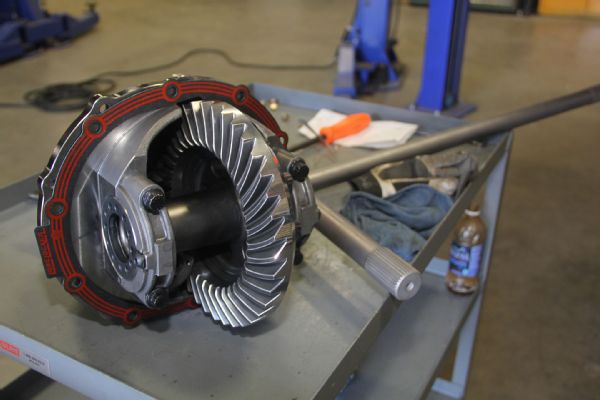 Our differentials this year are Gearworks 10-inch high-pinions with a rear spool and a front Gearworks automatic locker. The 10-inch gears are a 5.43:1 ratio and just barely fit in the Spider-9 housing, but give us additional strength over a more common 9-inch gearset. The high-pinion puts the driveshaft up out of harm’s way, and the low gear ratio easily turns our 38-inch Falkens. The third member comes with a Lube Locker gasket for clean, leak-free assembly. Our new 300M Spidertrax axleshafts should laugh off any abuse we can dish out.
Our differentials this year are Gearworks 10-inch high-pinions with a rear spool and a front Gearworks automatic locker. The 10-inch gears are a 5.43:1 ratio and just barely fit in the Spider-9 housing, but give us additional strength over a more common 9-inch gearset. The high-pinion puts the driveshaft up out of harm’s way, and the low gear ratio easily turns our 38-inch Falkens. The third member comes with a Lube Locker gasket for clean, leak-free assembly. Our new 300M Spidertrax axleshafts should laugh off any abuse we can dish out.
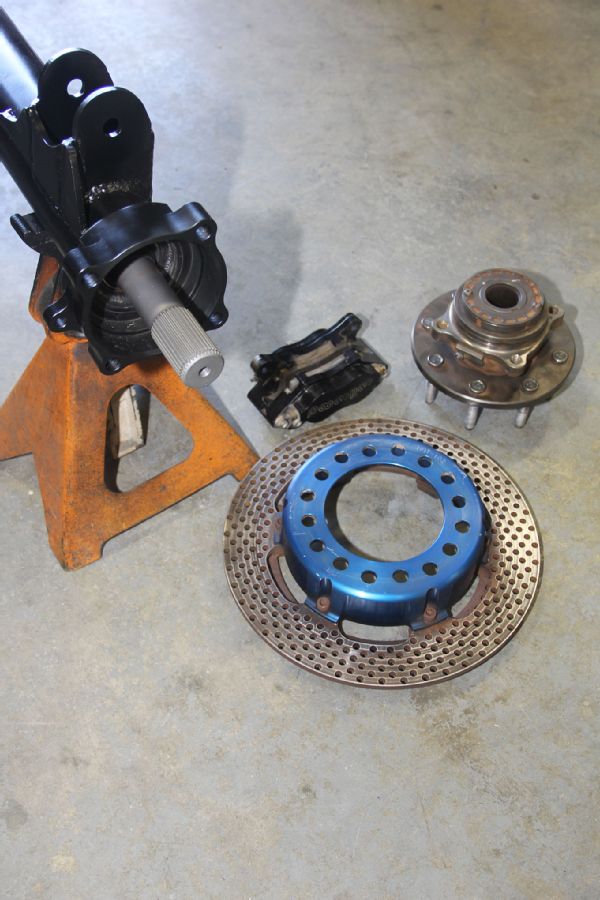 The new bearing cups with double seals got doused in Eastwood Chassis Black, and then we assembled the big vented disc brakes, Willwood calipers, and Spidertrax Ultimate unit bearings. These unit bearings bolt to the bearing cups (now welded to the axletube) with four bolts, and this allows quick and clean assembly with heat-treated chromoly strength.
The new bearing cups with double seals got doused in Eastwood Chassis Black, and then we assembled the big vented disc brakes, Willwood calipers, and Spidertrax Ultimate unit bearings. These unit bearings bolt to the bearing cups (now welded to the axletube) with four bolts, and this allows quick and clean assembly with heat-treated chromoly strength.
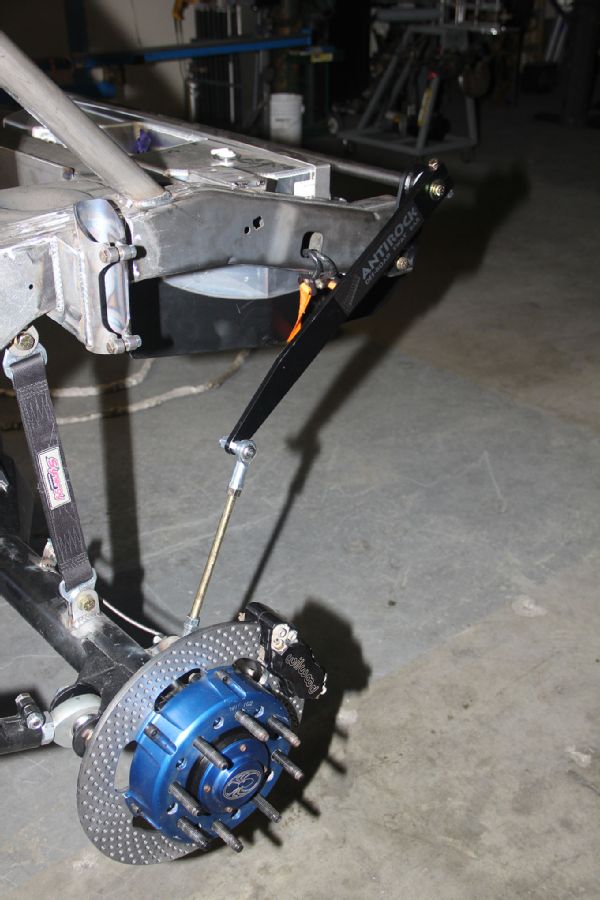 The assembled rear axles have 35-spline axleshafts running through the Ultimate unit bearing. The unit bearings use Timken bearings and are available in a variety of wheel bolt patterns; we chose 8-on-6 1/2. Spidertrax also offers a 40-spline unit bearing if you want even more strength. Note that these unit bearing hubs do not use a removable drive slug or selectable hub, so your axleshafts are always spinning and connected to your wheels—a simple strong design that does require well-balanced driveshafts, but more on that next time.
The assembled rear axles have 35-spline axleshafts running through the Ultimate unit bearing. The unit bearings use Timken bearings and are available in a variety of wheel bolt patterns; we chose 8-on-6 1/2. Spidertrax also offers a 40-spline unit bearing if you want even more strength. Note that these unit bearing hubs do not use a removable drive slug or selectable hub, so your axleshafts are always spinning and connected to your wheels—a simple strong design that does require well-balanced driveshafts, but more on that next time.